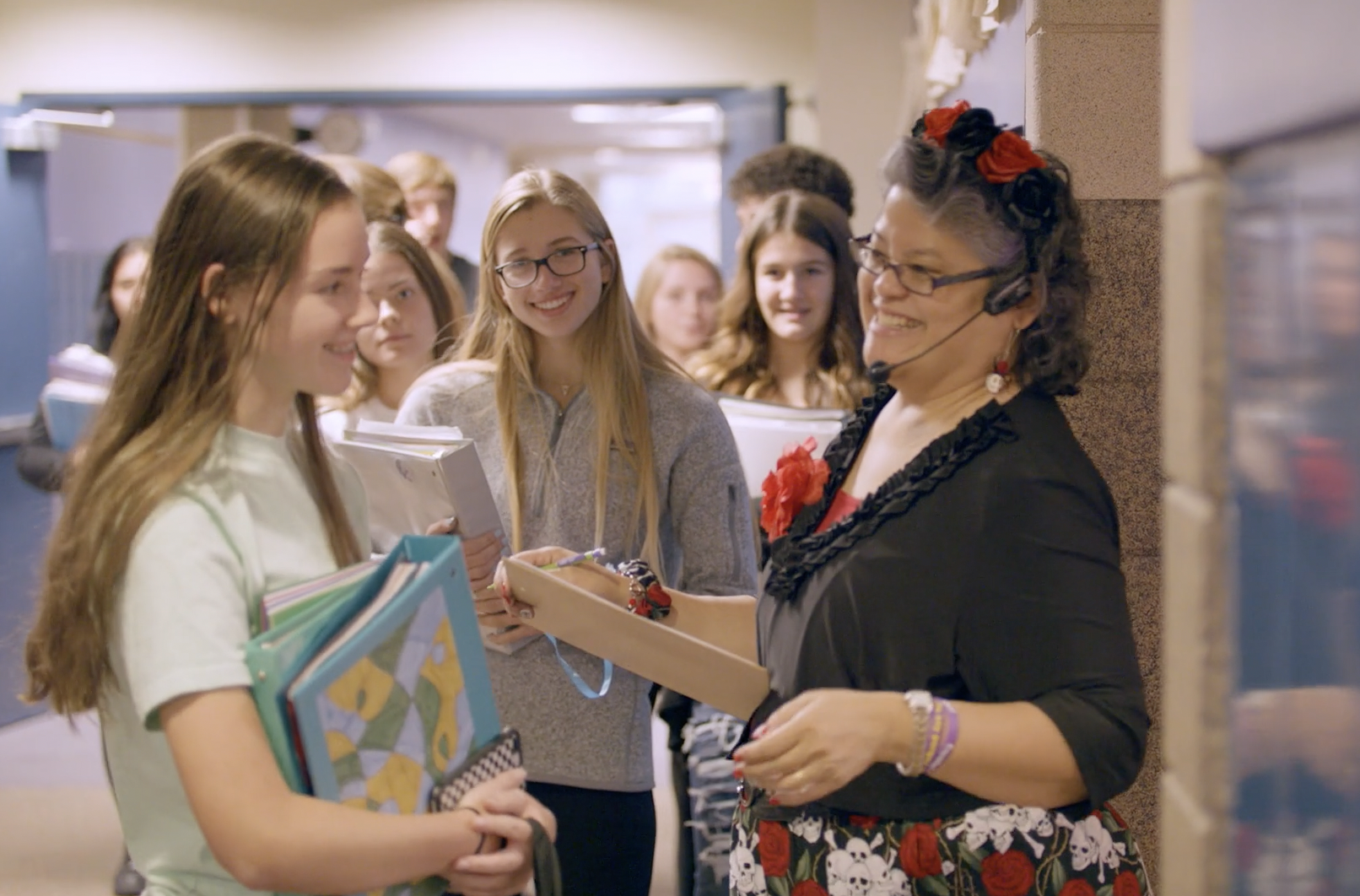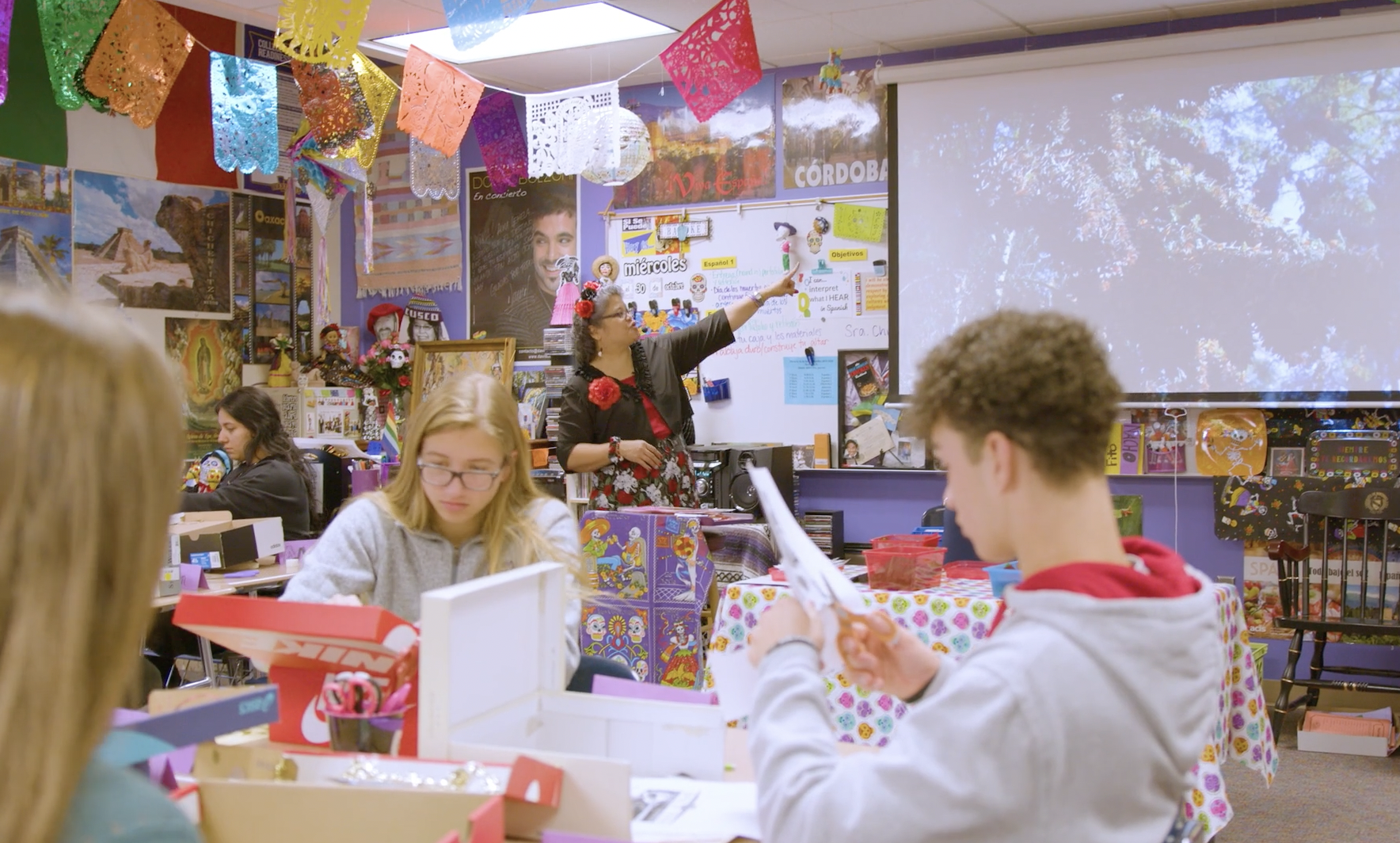How We Can Support Our Teachers of Color
This is the first in a series of articles about the unique challenges teachers of color face and the many ways we - as fellow teachers, administrators, parents, and community members - can support them.
By now, it’s common knowledge that teachers have been bending and breaking under relentless stress and demands from inside and outside the classroom. Teachers of color, especially those in predominantly white communities, face an additional, unique set of stressors.
“There were many times someone would enter my classroom and assume I was the paraeducator,” Jamie Walker Sallis recalled of her 25 years as a special education teacher in the Davenport (Iowa) Community School District . “And I live in a very diverse community; my district is one of the more urban districts in the state.”
Wafa Safi-Hassan, a high school teacher from Indiana, has also faced discrimination. “I have a Master’s degree, I was born and raised in this country, but I wear a hijab,” she said. “There was hesitation to hire me in a permanent teaching position both in Arizona, where we used to live, and here in Indiana. I was only hired into a full-time teaching position as an AP Environmental Science and Forensics Science teacher after doing three years of long-term substitute teaching. And until a few months ago, I was the only teacher of color in my building of 130 educators.”
Because it’s hard to pinpoint Kerisa Baedke’s background, she never personally experienced negativity. However, her first teaching job was at a small school in a small town in Iowa “where everyone knows your business,” she recalled. Within the first week of school, someone mentioned to her that there is one black man in town. ‘“I wondered if they were telling me to warn me or telling me that one of my people was here. As it turns out, they were telling me to warn me.”
The roadblocks that these teachers - and their fellow teachers of color - have faced have spurred them to action. Jamie now serves as an Equity Innovator Teacher-Leader with the Davenport (Iowa) Community School District and she leads the Iowa State Education Association’s (ISEA) Multicultural Committee.
Wafa is co-chair of the Indiana State Teachers Association (ISTA) Racial Affairs Committee; she is currently on leave from the classroom while she participates in a fellowship in partnership with ISTA and the National Education Association (NEA).
Kerisa is a retired Spanish teacher from the Waukee (Iowa) Community School District. She is currently completing an NEA Professional Practice and Policy Teaching Fellow program with the Iowa State Education Association (ISEA), and she remains an active member of the ISEA Multicultural Committee.
And by the way, her background is quite extraordinary. Kerisa describes herself as “very multiracial. My dad was from Jamaica. His father and grandfather were from China. My mom is from Guam, and because the Spaniards ‘discovered’ Guam, I am both indigenous and Hispanic. My great-grandmother was enslaved. When my students would come into my classroom, they didn’t say, ‘Oh, she’s a black teacher’ or ‘She’s an Asian teacher.’ I used to only focus on culture, but then I began using racial terms to help my students better relate to me.”
Jamie, Wafa, and Kerisa all shared similar suggestions on how we can best support our teachers of color.
Create Affinity Groups
Teachers of color need access to affinity groups where they can connect and support each other.
Kerisa Baedke and students in her former classroom, which was described as an “explosion of color.”
“I recently spent 3 ½ hours talking to a first-year high school teacher,” Kerisa explained. “She is the only black teacher in the building, and she just needed to see another person of color. She needed to connect with someone who has perhaps gone through some of the same things she has and who understands what she’s going through. Her lived experience is completely different from that of her white colleagues.”
Jamie echoed that sentiment. “I would like to support members so they don't feel like they’re alone,” she said. “Sometimes it’s hard to be the only person of color in your building - you may feel like people don’t understand you or your culture. Not that there’s any ill intention - if you don’t know, you don’t know.”
In response to this need, the ISEA Multicultural Committee is planning four regional affinity group meetings this year.
ISTA has affinity groups in every region of the state, though Wafa would like to see them in each school district. “We talk about bringing more teachers of color to Indiana schools, but why would they want to teach in a rural or suburban area when the teachers there don’t feel like they’re in a safe or welcoming space?” she pointed out. “Teachers of color need other people they can relate to.”
Provide Diversity, Equity, and Inclusion Training
Kerisa, Jamie, and several of their fellow ISEA Multicultural Committee members have attended the NEA’s Leaders for Just Schools training. “We want to share what we’ve learned with others,” Kerisa said, “We have three virtual and in-person trainings planned for the school year. The goal is to help more members learn more about equity, bias, and what that means for your classroom and school district. We want to equip all teachers to handle these discussions - not just the teachers of color.”
Jamie added, “When you choose to learn about how to improve school culture or understand how implicit bias can sneak in, you can make such a big difference in your school. At no time will we make people feel ashamed during these training sessions. This is a journey of learning. We are all still on that journey.”
One of Wafa Safi-Hassan’s classes won a grant for tree planting; here she is accepting the grant with some students and administrators.
The ISTA Racial Affairs Committee is also working on social justice issues and training. “We are training our teachers on representation in their classroom, having a multicultural curriculum, and the importance of pronouncing a student’s name correctly,” Wafa shared. “I grew up in Kentucky, and every part of the curriculum was Eurocentric. Now I share stories about female scientists and scientists of color who have made waves in the scientific community.”
“I don’t want my white colleagues to get sucked into the political black hole of the rhetoric out there,” Wafa added. “Culturally responsive teaching is not critical race theory! All of my colleagues are good teachers and want the best for their students. But if they’re not equipped to have conversations about LGBTQ+ or racial justice issues, they may do more harm than good.”
Encourage students of color to pursue teaching
“Everywhere in education, students of color need to see that it’s possible to become a teacher or administrator,” Kerisa explained. “They need to see that there’s a pathway. The NEA and many state affiliates, including the ISEA, are looking at ‘grow your own’ programs to try to get our students of color to come into the profession.”
Earlier this year, the NEA sent Jamie Walker Sallis and other educators to Washington, DC to discuss the Public Service Loan Forgiveness Program with Miguel Cardona, the Secretary of Education.
The Ohio Education Association launched a “grow your own” program, Educational Pathways, in 2021. Its set up future teachers for success by pairing experienced professionals with aspiring educators as they complete their degrees through the Pathways program at Central State University and Eastern Gateway Community College and begin careers in education. Programs like these are a great start to solving a vexing challenge.
Kerisa reported that in Iowa, students of color have increased from 9.7% to 26.1% of the student population in the last decade. Meanwhile, teachers of color have only increased from 1.8% to 2.8%. “We are serving a much more diverse community, and our teachers are not reflecting the faces in their classroom,” she said.
“We have students in Iowa who don’t have a person of color in their district - not a student, teacher or staff person,” Jamie added. “We want to make sure our students are educated at a global level and can learn from and with people who don’t look like them.”
How are you supporting teachers of color?
If your school, district, local, and/or state affiliate has a program in place to support teachers of color, we’d love to hear about it - and possibly include your story in a future article. Please email us at info@educatorsleadingtheprofession.org.




